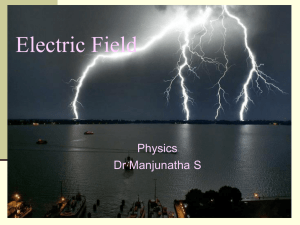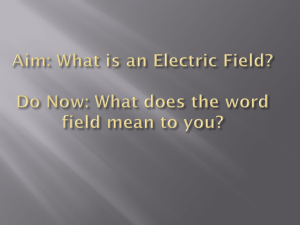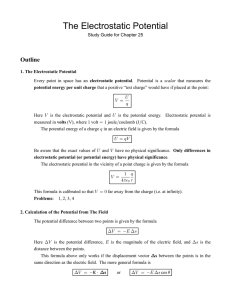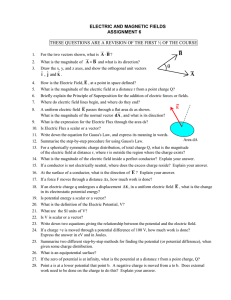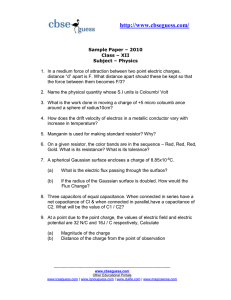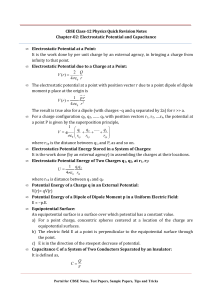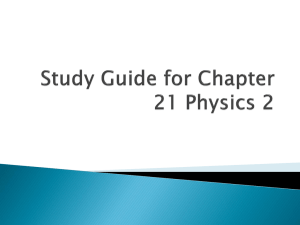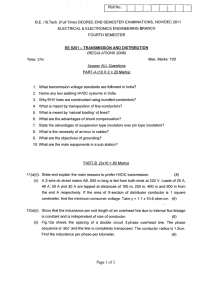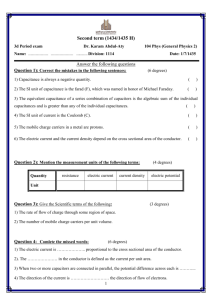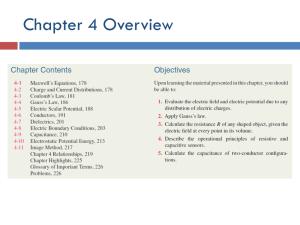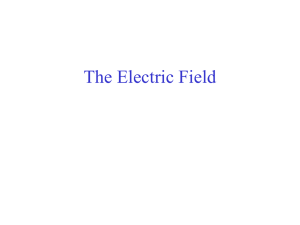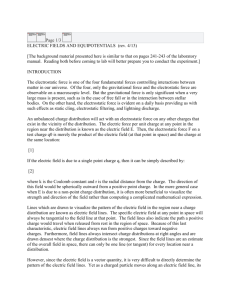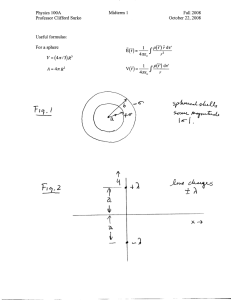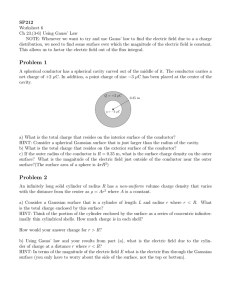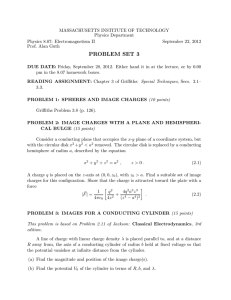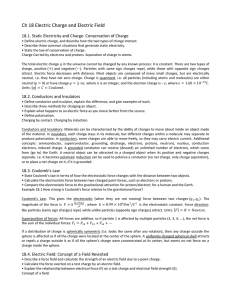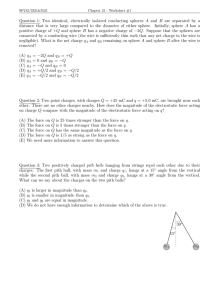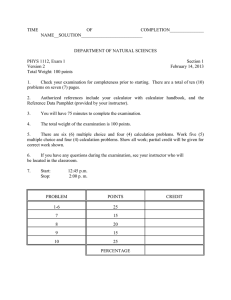Document 10957919
advertisement
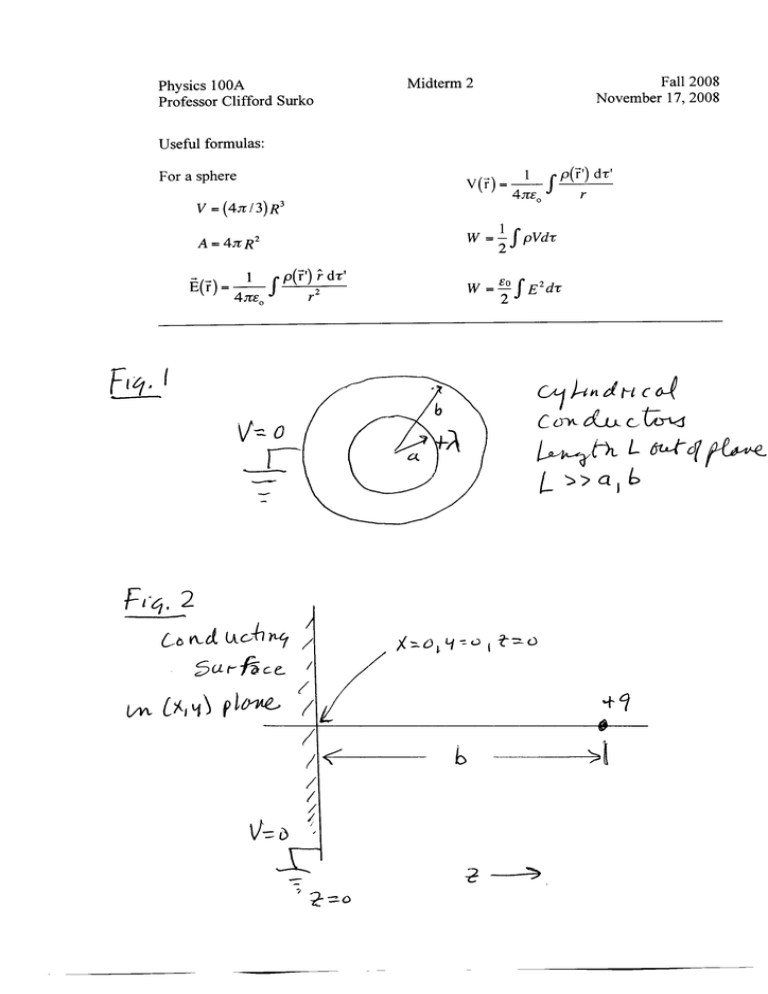
Physics 100A Professor Clifford Surko Midterm 2 Fall 2008 November 17, 2008 Please note: Be sure to state clearly the reasoning behind your answers. Answers without explanation or supporting work will receive little or no credit. 1. This problem relates to Fig. 1. Consider two concentric conducting cylinders of length L and radius a and b, as shown, where L >> a and L >> b. The outer cylinder is grounded (i.e., at V = 0) and the inner one is charged with a charge per unit length + λ. (a) Find the electric field E(s) and the potential V(s) in the region between the two conductors. (b) Find the capacitance per unit length, C/L, for this configuration of coaxial cylinders. (c) Find the electrostatic energy per unit length of conductor, W/L, required to establish this configuration. Use any method to do this that you’d like, but show your work clearly. 2. Consider a spherical conductor of radius b in free space with a charge + q. (a) Find the work required to charge the sphere. (b) Find the energy stored in the electrostatic field and compare your answer with that in (a). (c) What is the capacitance of the sphere (i.e., assuming that the “second conductor” is at infinity)? 3. This problem relates to Fig. 2. A charge + q is at position x = 0, y = 0, z = b, a distance z = b from a grounded conducting surface oriented in the (x, y) plane and located at z = 0. (a) What is the force of the conductor on the charge (magnitude and direction)? (b) What is the work required to establish this configuration (magnitude and sign), starting with the charge + q at z = ∞? Explain clearly the sign of your answer in terms of the change in the electrostatic field energy (i.e., why is the electrostatic field energy greater or less?). (b) Find the electric field, E(z), normal to the surface at x = y = 0, and use it to calculate the surface charge density (sign and magnitude) at that point on the surface.

